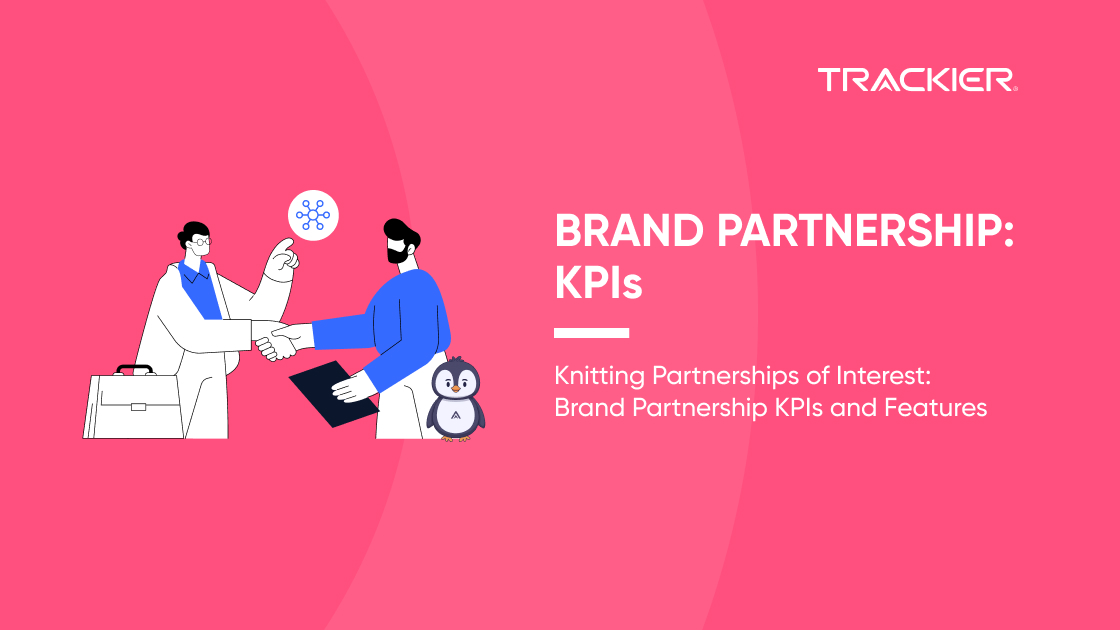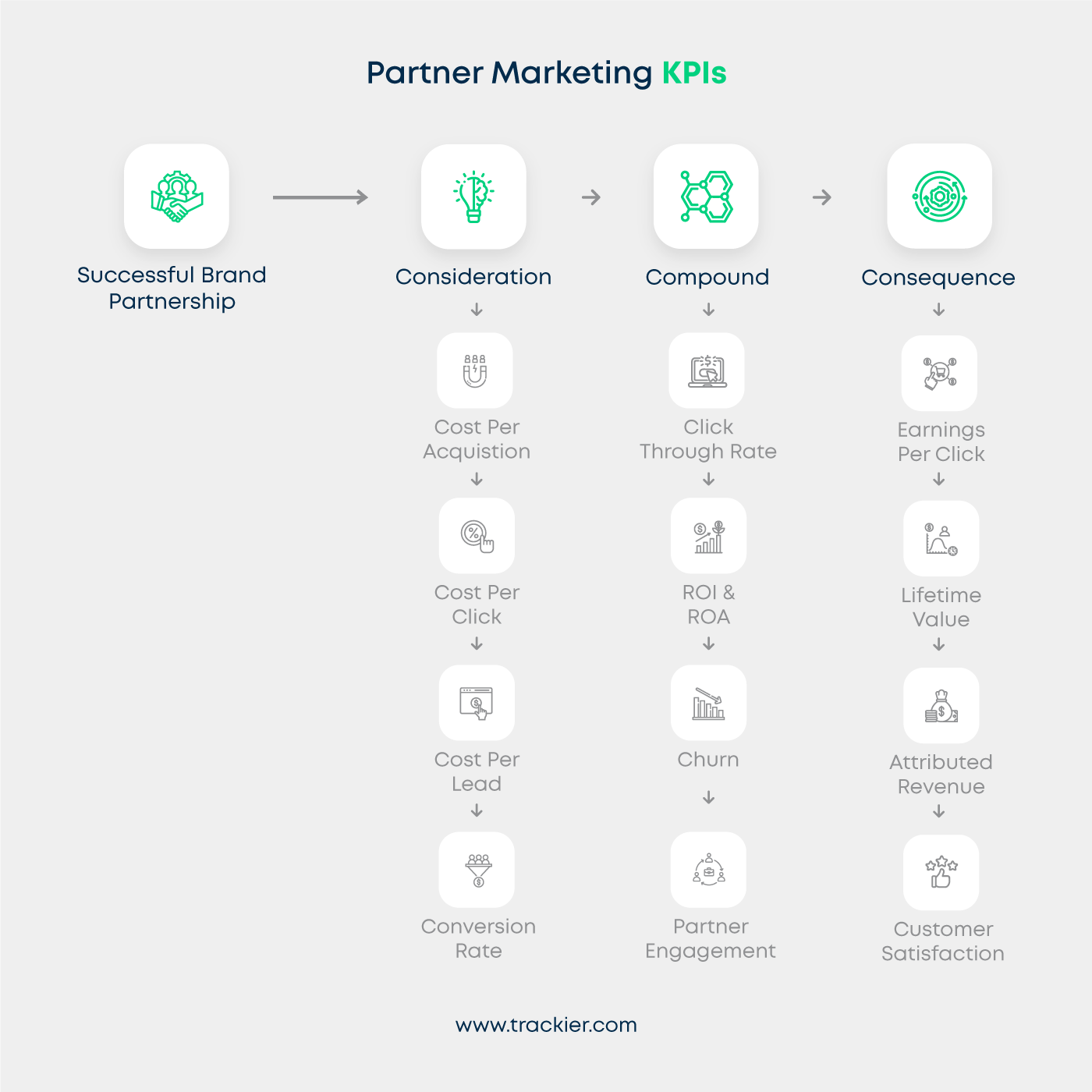The ultimate goal of every marketing campaign is to create a niche for the business in the vast ecosystem of competitors, corporations and consumers. But when you’ve explored all the domains and connected with every possible target audience, the selfsame space starts becoming a hindrance to business expansion. And that’s where partner marketing can come in handy. If you’re also stuck between the nexus of lemmatizing niches and unwelcoming markets, here’s how you can use brand partnership KPIs to propel your business!
The Core Concept: What are Brand Partnerships?
Brand partnership or co-branding is a dynamic marketing-cum-advertising strategy that helps businesses to propel their growth by leveraging upon each other’s product value and credibility in the market. BMW, Apple, Levi’s, McDonald’s, Spotify – you name it! The past decades have seen an incredible rise in the popularity of partner marketing programs with more than 74% industry giants based in North America, Asia, Europe and Australia actively joining hands with non-competing companies for their big-budget campaigns.
Ideally, brand partnerships are established between companies that offer complementing products or services. But they’re equally viable to kickstart your content marketing, affiliate network and direct sales initiatives.
All things considered, now let’s understand how to measure partnership success!
Stepping Stones to Building Beneficial Brand Partnerships
When you’re an influential brand, it’s easy to find hordes of companies for your brand partnership proposal. However, it’s not necessary that every collaboration will be a beneficial one.
Success of a brand partnership is forecasted from the very moment it is conceived. Shared goals, choice of channels and partner performance metrics form the foundation of a progressive, scalable collaboration.
- Identify Common Target Audience: When partner brands have similar customer segments, they can offer greater value to the consumers and promote organic sales for the joint product.
- Use Content That Connects: Learn about your audience’s preferences. A personalized message that reaches them through the channel and language they prefer is more likely to create an impact.
- Set Guiding Principles & Goals: Take time to exchange notes about your marketing strategy with your brand partner. It is best to start off negotiations once you’ve mutually agreed on the contract length, conversion milestones, advertisement methods and financials.
- Consider Social Media Influencers: Popular figures on Youtube, Instagram, Facebook etc. can be your potential brand partners if their expertise augments your product.
- Measure Progress Qualitatively: Outline the strategic partnership KPIs. Maintain a weekly and monthly record to assess campaign’s efficacy in achieving the predefined KPIs. This little effort can help you and your partner optimize the marketing techniques whenever the performance falters.
Ensuring Sureshot Success With Brand Partnership KPIs
While the simple, linear conversion model can be easier to track, it provides minimal insight into the pitfalls and prime features of a co-branding campaign. Contrarily, brand partnership KPIs are measurable indicators used to analyze the efficacy of each touchpoint in a campaign. They are data-centric and objective values that can help you monitor partner activity, enrich customer experience and set up for long term success. You needn’t plunge into the entire pool of KPIs every time you run a campaign, yet it is best to include as many as possible.
Sounds mind boggling, right? Worry not! You can make it a hassle-free process with an automated, partner performance management tool that can track your campaign’s progress in real time, saving you the endless hours spent on running reports.
Top 12 Brand Partnership KPIs You Should Measure
Optimizing your strategic partnership KPIs as per the specifics of your co-branding marketing campaign should be a continual and gradual process. Remember – a multifaceted approach is the secret element of a successful brand partnership!
-
ROI & ROAS
Return on Investment (ROI) and Return on Ad Spend (ROAS) are two indicators that draw a relationship between the amount invested and revenue generated in a marketing campaign. High ROI and ROAS denote the profitability of paid advertising programs, which can be further used to analyze the effectiveness of any given channel, agency or publisher.
-
Attributed Revenue
Refers to the percentage of commission allocated to each touchpoint in a campaign against a conversion. Linear attribution model is a popular type used by a majority. Time-decay, position-based, last non-direct click and first/last interaction attribution models are best applied for limited access campaigns.
-
Cost Per Click (CPC)
If your PPC is the fulcrum of your marketing strategy, Cost Per Click is the best metric you can implement. It basically shows the amount spent to trigger a user action (in this case, a simple click) on an advertisement. With a cohesive partner, the outreach of your ad can be limitless. You can feature in the form of a popup on the partner’s website or send it out through affiliate cold emails.
-
Cost Per Lead (CPL)
Where conversions are difficult to crack, CPL becomes a promising partner performance metrics. You can see its best application in the insurance, automobile and banking industries, where capturing the data of a visitor via a landing page form is considered a necessary step to warm up one’s prospects before a conversion.
-
Cost Per Acquisition (CPA)
As the name indicates, CPA measures the price spent to obtain one customer through a given channel or campaign strategy. If you’ve ever been warned about the dangers of over-positivity, this is another case in point to prove it right.
Learn How Trackier’s Performance Marketing Tool Helps Brand Partners Improve Their Outreach
-
Click Through Rate (CTR)
Ratio of clicks to impressions is called the click through rate. It shows the percentage of visitors who have engaged with your campaign’s landing page, thereby turning into a potential lead. CTR is a simple but effective metric to estimate the effectiveness of your advertising campaign.
-
Conversion Rate
It is one of the most important, if not fundamental, KPIs for partnerships. Conversion rate shows the percentage of clicks that end up in a purchase once they’ve entered the vortex of your marketing campaign. Positive conversion rate shows that your brand partnership is compatible with your niche.
-
Earnings Per Click
This metric provides an aggregate revenue amount expected from each click. Use this metric as your key to set the expectations for a campaign.
-
Lifetime Value (LTV)
It alludes to the total revenue generated by a customer over his/her entire period of engagement with a brand. Repeat purchases, high participation in brand programs or referrals are few indications of a high value customer. Rising LTV graphs proves that your campaign is targeting the right audience segment, thereby giving you a breather from the incessant optimization process (phew!).
-
Churn
Dropping out of partners and affiliates is one of the strongest brand partnership KPIs that highlights lack of communication between the stakeholders. A detailed discussion with the disengaged partners can also help you understand the fallacies of your campaign. No partner marketing plan can ever work without dynamicity, right?
-
Partner Engagement
Your brand partner might bring in an entire load of enthusiasm to your collaborative marketing plan, but does it ensure a smooth ride till term end? Absolutely not! You need to keep a track of the activity of your partners throughout the period – starting from the top of the chain i.e. the brand and going all the way to its individual units i.e. the affiliates – to check their level of participation, by extension depth of action.
-
Customer Satisfaction
Is generating revenue the ultimate aim of a brand partnership? Well, there’s at least a ton of prominent brands that would say – No! Revenue earned by attracting new consumers to your brand can come up as a temporary boost in the financial charts, yet the only means to sustain it is quality offering. Make sure your co-branding campaign amplifies your brand voice, making it more trustable.
Power Up Your Brand Partnerships KPIs with Trackier
With Trackier’s Performance Management Platform you can fast track your brand partnership KPIs management by keeping a record of all the conversions, transactions, partner engagement history and traffic in one place.
Let Trackier help you bridge the gap between your partners and marketing success. Connect with us to know more!
Frequently Asked Questions
-
What is a brand partnership strategy?
Brand partnership strategy is a kind of formal agreement between two companies, wherein they collaborate to create a dynamic marketing campaign that takes advantage of their individual business credits to break into new markets or customer segments. It is also known as partner marketing or co-branding.
-
What are the 4 types of partnership?
Brand partnerships are categorized on the basis of their duration and division of shares amongst partners. The four common classes are:
-
- General Partnership: Most basic form of association. Both partners share equal profits and responsibilities of the campaign. Usually legitimized by a legal agreement.
- Limited Partnership: Has an uneven distribution of power amongst partners. The general partner takes major responsibility to generate profits and supervise the marketing campaign. Silent partner(s) only provide funds in exchange for a set profit percentage.
- Limited Liability Partnership: Both of the partners take equal shares from the profits, however they are not accountable for the losses borne by their counterparts. Each partner bears the liability of their own marketing efforts.
- Limited Liability Limited Partnership: A safer version of Limited Partnerships. General partner’s contributions are lemmatized to protect each partner from drastic losses.
-
What are the benefits of brand partnerships?
The outcomes of brand partnerships are dictated by multiple variables, including nature of industry, proficiency of partners, campaign design and term of activity. If you can capitalize on all of these factors, brand partnerships can become a sustainable method to increase revenues, brand visibility, customer loyalty and reputation in the marketplace.
-
How do you measure the success of a partnership in marketing?
If implementing a brand partnership strategy is tedious, keeping a track of its progression can be doubly tacky. That’s why it’s essential to demarcate monthly or quarterly KPIs for partnerships. Positive ROI, ROAS, Conversion Rate and Revenue indicate good sales performance, while attributes like positive Lifetime Value and minimal churn bear witness for incredible co-marketing. The more KPIs you set, the less are downfalls you’d have to tackle!








